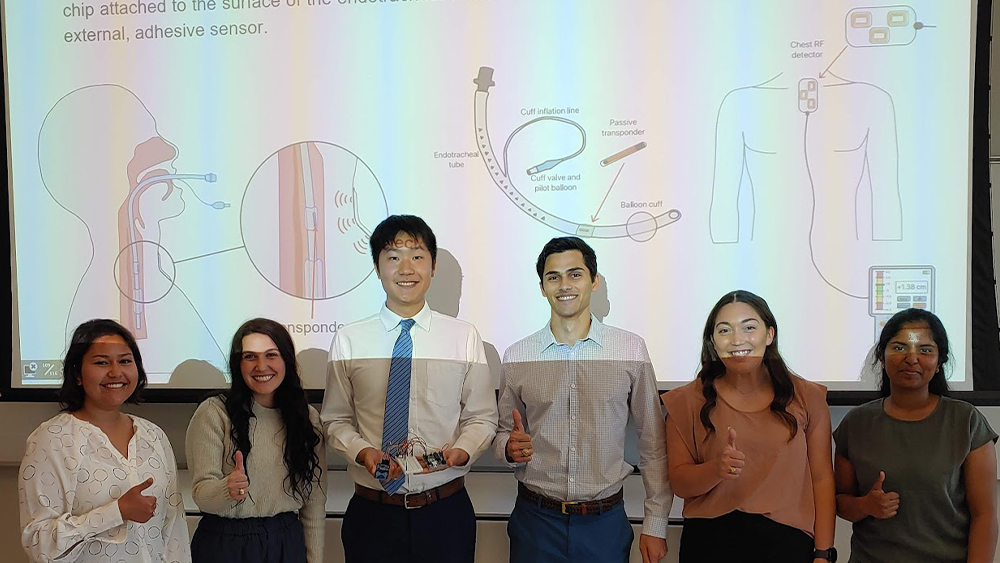
During the intubation of children in the intensive care unit, operating room or emergency settings, clinicians need a way to localize the tip of the endotracheal tube (ETT). The tube’s path and size are crucial to safely get air to the lungs.
If the ETT is not correctly placed, the tube could go into the gastrointestinal tract, leading to complications including low blood oxygen, inadequate ventilation and collapsed lung or lung tissue injury.
A team of six former students from the Department of Biomedical Engineering at Texas A&M University worked to resolve this problem as part of their senior capstone project.
"There is a need to ensure device compatibility to improve patient outcomes during and after intubation without additional risk for injury, specialized training or complex imaging," said team member Kassidy Porche.
According to Dr. Charles Peak, instructional assistant professor in the department, children are often given the smallest women's sizes of ETT, but even they are too big for adolescents and children.
The capstone team's solution was a device they named EndoTrack, which has the ability to externally track where the ETT is located.
"EndoTrack implements a passive radio frequency identification transponder into existing ETT designs and an external set of radio frequency identifications (RFID) readers to localize the ETT tip," Porche said.
The ETT has a corresponding chest detector with three separate coils and antennae that detect the transponder radio frequency strength and triangulate the location.
"These measurements can be taken at specified intervals to provide information about the net displacement of the ETT tip over long durations," she said. “This coupling induces a current in the transponder, allowing a radio frequency signal to be returned to the multiple chest detector antennae. Each of the three coils and antennae on the chest detector alternates measuring signal magnitude. The magnitude of each signal can be used to localize the ETT tip."
The detector emits high-frequency radio waves that can propagate through tissue without injury and be coupled with the antennae on the transponder.
“Localized detection uses the same technology that’s in your pocket: RFID chips — much like credit cards. Exploiting the properties of RFID is what helped this team innovate," Peak further explained. "When in close contact, the RFID sensor will provide auditory feedback, ensuring the device is placed correctly."
According to Porche, the cost for the ETT, chest pads and sensors is $25, a fraction of the cost for alternative solutions.
"EndoTrack offers an inexpensive and effective solution for the $4.9 billion in annual expenses arising from intubation complications," she said.
In addition to Porche, the capstone team included Nathan Bliss, Rachel Greve, Xiao Ling, Srichakrika Nunna and Amanda Trevino. Since graduating in May 2022, the teammates have pursued a variety of paths, including graduate and professional school degrees as well as jobs in the industry.
The project was sponsored by Dr. Brandon Hunter, a Texas Children's Hospital pediatric intensive care unit physician in Houston. Project sponsors provide vital support to student teams by sharing their ideas and feedback.
“We have a unique environment and partnership with Texas Children’s Hospital, specifically in the pediatrics space,” Peak said. “This collaboration leads to impact-driven engineers with experience navigating the challenges seen in early-stage startup companies. Physician feedback helps the students stay patient-focused while using their engineering knowledge to develop devices with market potential.”